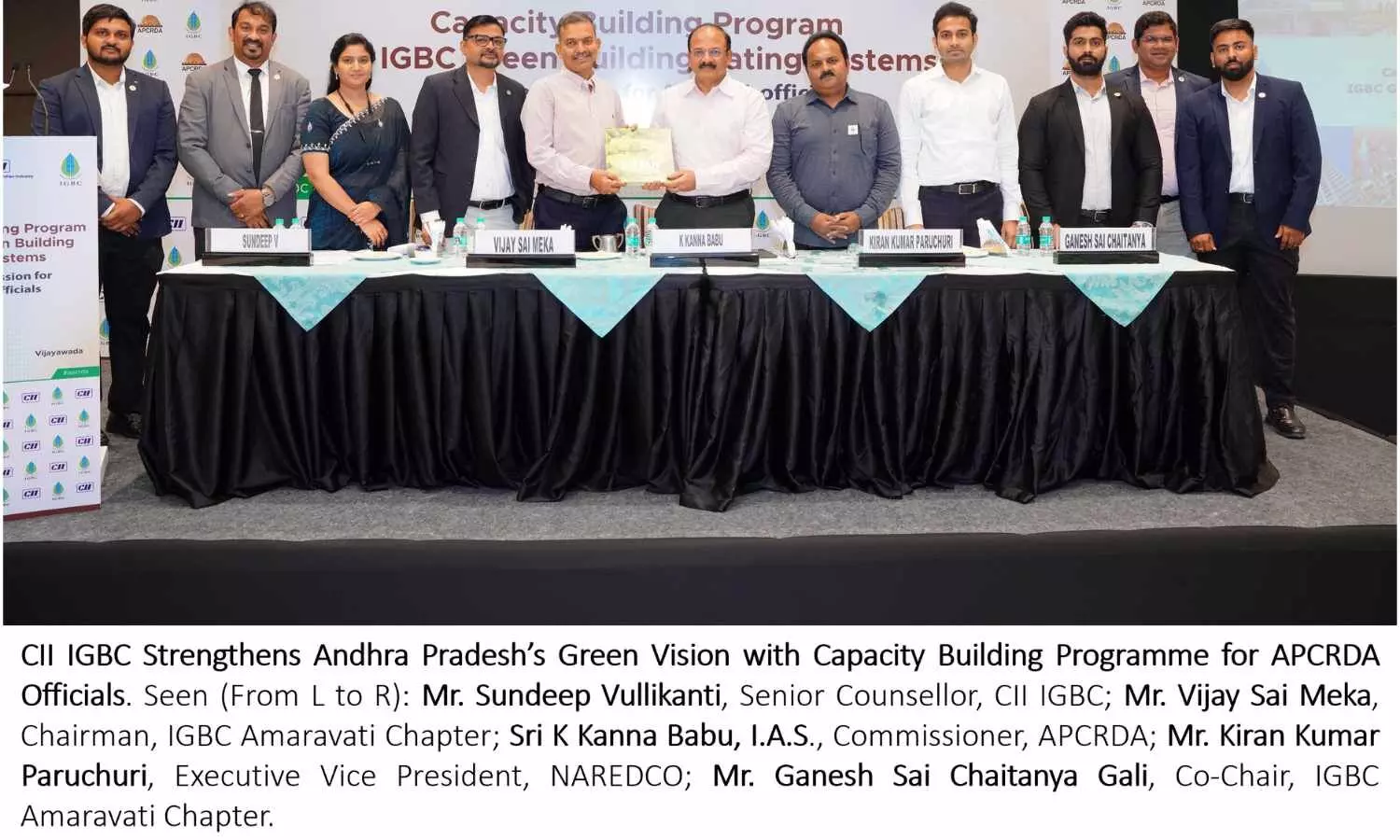CII IGBC strengthens AP’s green vision with capacity building
The CII-Indian Green Building Council (IGBC) is boosting Andhra Pradesh’s green vision through capacity-building initiatives, promoting sustainable construction, eco-friendly infrastructure, and environmental awareness across industries.
CII IGBC strengthens AP’s green vision with capacity building

As Andhra Pradesh accelerates its journey toward realizing the Swarna Andhra 2047 vision and achieving Net Zero by 2040, the Indian Green Building Council (IGBC), part of the Confederation of Indian Industry (CII), conducted an exclusive capacity building programme for officials of the AP Capital Region Development Authority (CRDA) here on Friday.
iThe session brought together over 50 CRDA officials for a deep dive into the concepts and practices of IGBC green building rating systems. The programme aimed to empower government departments to lead by example in implementing green building norms across all upcoming infrastructure developments.
Delivering the keynote address, CRDA Commissioner K. Kanna Babu emphasised the strategic importance of sustainable development in urban planning. He said "AP is fully committed to building a sustainable future, with Amaravati envisioned as a model green capital. We are taking decisive steps to ensure that every project under APCRDA integrates sustainable design and green building principles. As a testament to this commitment, we aim to achieve green and Net Zero building certification for the upcoming APCRDA Head Office in Amaravati. This flagship project will serve as a demonstration and inspiration for all future developments in the region. IGBC’s guidance and collaboration remain crucial in our journey towards achieving Net Zero status by 2040."
IGBC Amaravati chapter chairman Vijay Sai Meka said “the CRDA team has shown exemplary leadership by adopting IGBC Green Ratings in its key developments. This collaboration stands as a model for how public agencies and green building councils can work together to drive measurable environmental impact.”

